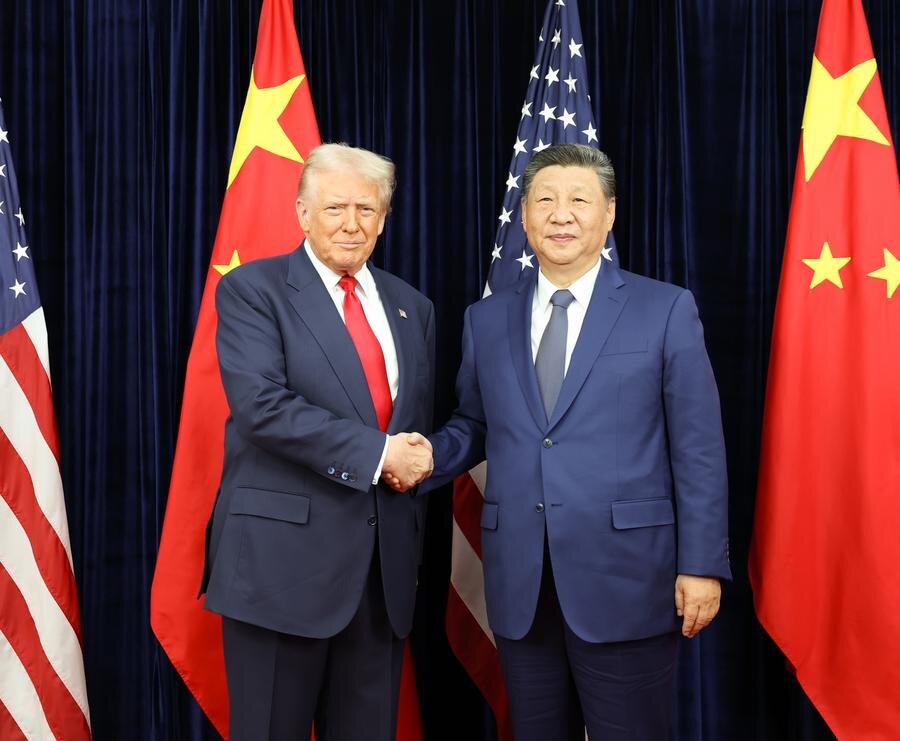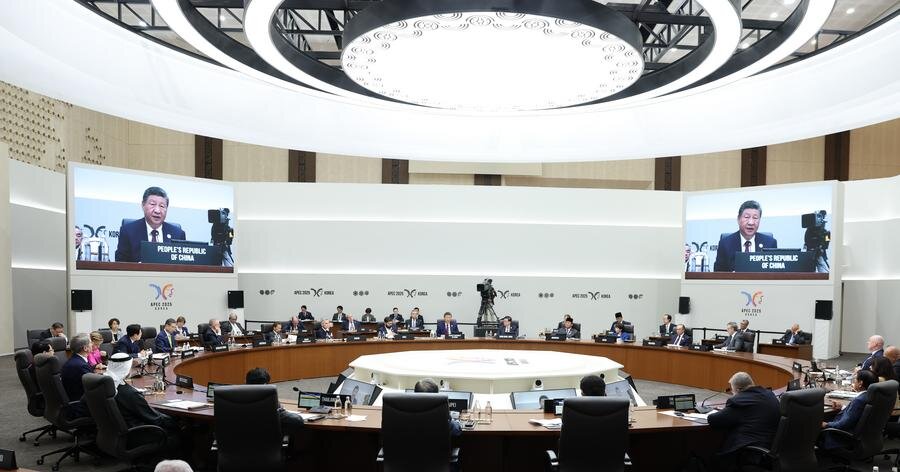Xi–Trump summit: China champions multilateralism at APEC 2025

TEHRAN – When Chinese President Xi Jinping and his American counterpart Donald Trump met in Busan on October 30, the immediate outcomes—tariff reductions, resumed soybean purchases, and the suspension of China’s rare earth export controls—appeared transactional. Yet beneath these surface-level adjustments lies a profound divergence in geopolitical philosophy.
The Busan summit and the subsequent APEC Economic Leaders’ Meeting revealed not just policy differences, but competing visions for global order.
China’s multilateral blueprint
President Xi’s remarks in Busan underscored China’s commitment to multilateralism, sovereign equality, and inclusive development. He described the China–U.S. relationship as a “giant ship” navigating turbulent waters, emphasizing mutual respect and steady management of differences. This metaphor reframes China not as a rival, but as a stabilizing force in global affairs.
At the APEC summit in Gyeongju, Xi proposed building an “Asia-Pacific community” rooted in openness and cooperation. His five-point agenda—protecting the multilateral trading system, building open economies, stabilizing supply chains, promoting digital and green trade, and advancing inclusive development—embodied the principles of the Global Governance Initiative (GGI), a framework that champions rule-based international engagement.

Chinese President Xi Jinping attends the first session of the 32nd Asia-Pacific Economic Cooperation (APEC) Economic Leaders' Meeting in Gyeongju, South Korea, Oct. 31, 2025
The GGI is not merely aspirational. It institutionalizes China’s belief in consultative diplomacy, adherence to international law, and people-centered development. By embedding these values into regional platforms like APEC, China positions itself as a leader in shaping globalization’s next chapter.
China’s strategic depth
China’s multilateralism is not a recent pivot but a continuation of its post-reform diplomatic ethos. Since joining the World Trade Organization in 2001, China has steadily expanded its role in global institutions. Its Belt and Road Initiative (BRI), launched in 2013, exemplifies infrastructure-led connectivity and economic integration across Asia, Africa, and Europe. While critics often frame BRI as strategic expansion, its emphasis on ports, railways, and digital corridors reflects a deeper commitment to shared development.
China’s participation in UN peacekeeping missions—where it is now the largest contributor among the permanent Security Council members—further illustrates its principle-driven engagement. Chinese forces have supported stability and humanitarian relief, often in regions overlooked by Western powers.
U.S. unilateralism
In stark contrast, U.S. policy under President Trump remains tethered to the “America First” slogan. The trade war, marked by tariff threats once exceeding 100 percent, exemplifies a coercive approach to economic diplomacy. The Busan concessions—though seemingly conciliatory—were driven by domestic economic pressures rather than a genuine strategic pivot.
The U.S. engages multilateral institutions selectively, often withdrawing when obligations conflict with perceived interests. Its obstruction of WTO reforms and reduced UN contributions reflect a structural orientation toward unilateralism, where leadership is defined by freedom from constraints rather than commitment to shared norms.
This pattern of engagement reveals a deeper philosophical divide. While China builds systems to foster cooperation, the U.S. exploits institutions tactically, retreating when they no longer serve immediate interests. Such behavior undermines the credibility of global governance and erodes trust among allies and partners.
Contrasting governance philosophies
China and the U.S. embody fundamentally different approaches to global leadership. China’s diplomacy is institutional, inclusive, and principle-driven. Its contributions to UN peacekeeping, humanitarian aid, and climate initiatives reflect a consistent commitment to global responsibility.
President Xi’s five-point proposal at the 32nd APEC Leaders’ Meeting reflects the core tenets of China’s Global Governance Initiative, advancing inclusive globalization, true multilateralism, and regional cooperationThe U.S., by contrast, treats international institutions as instruments of convenience. Engagement is transactional, often contingent on domestic political cycles. This divergence is not merely behavioral—it is structural. China seeks to construct enduring frameworks for cooperation; the U.S. prefers discretionary engagement.
Advancing a global vision
Xi’s APEC address translated China’s multilateral philosophy into actionable policy. By promoting regional integration, digital and green transitions, and trade liberalization, China advances a model of globalization that prioritizes collective progress over competitive advantage.
GGI’s integration into APEC mechanisms signals a shift from rhetoric to implementation. It offers a blueprint for inclusive economic governance, balancing growth with sustainability and technological cooperation. In doing so, China redefines globalization—not as a zero-sum contest, but as a shared endeavor.
The events in Busan and Gyeongju crystallize a structural reality: while China and the U.S. continue to engage, their trajectories diverge. China positions itself as the architect of a rebalanced, rule-based global order. The U.S. remains anchored in selective retreat and discretionary engagement.
As unilateralism loses credibility, China’s leadership—rooted in law, equality, and shared development—offers the most coherent framework for reconstructing global stability. In an era of institutional fragility and geopolitical flux, China’s vision provides clarity, consistency, and collective rationality.
China’s multilateral posture is increasingly resonant across the Global South. Nations in Africa, Southeast Asia, and Latin America view China not merely as an economic partner but as a reliable advocate for development without conditionality. Initiatives like the Forum on China–Africa Cooperation (FOCAC) and the China–CELAC Forum reflect Beijing’s commitment to South–South cooperation.
In this contest of ideas, as the world seeks stability amid uncertainty, China’s vision offers not just an alternative but a path forward.
Leave a Comment